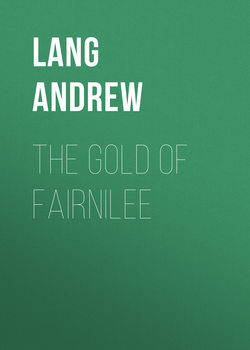Читать книгу The Gold Of Fairnilee - Lang Andrew, May Kendall - Страница 4
CHAPTER IV. —Randal and Jean
ОглавлениеTHE little girl soon made everyone at Fairnilee happy. She was far too young to remember her own home, and presently she was crawling up and down the long hall and making friends with Randal. They found out that her name was Jane Musgrave, though she could hardly say Musgrave; and they called her Jean, with their Scotch tongues, or “Jean o’ the Kye,” because she came when the cows were driven home again.
Soon the old nurse came to like her near as well as Randal, “her ain bairn” (her own child), as she called him. In the summer days, Jean, as she grew older, would follow Randal about like a little doggie. They went fishing together, and Randal would pull the trout out of Caddon Burn, or the Burn of Peel; and Jeanie would be very proud of him, and very much alarmed at the big, wide jaws of the yellow trout. And Randal would plait helmets with green rushes for her and him, and make spears of bulrushes, and play at tilts and tournaments. There was peace in the country; or if there was war, it did not come near the quiet valley of the Tweed and the hills that lie round Fairnilee. In summer they were always on the hills and by the burnsides.
You cannot think, if you have not tried, what pleasant company a burn is. It comes out of the deep; black wells in the moss, far away on the tops of the hills, where the sheep feed, and the fox peers from his hole, and the ravens build in the crags. The burn flows down from the lonely places, cutting a way between steep, green banks, tumbling in white waterfalls over rocks, and lying in black, deep pools below the waterfalls. At every turn it does something new, and plays a fresh game with its brown waters. The white pebbles in the water look like gold: often Randal would pick one out and think he had found a gold-mine, till he got it into the sunshine, and then it was only a white stone, what he called a “chucky – stane;” but he kept hoping for better luck next time. In the height of summer, when the streams were very low, he and the shepherd’s boys would build dams of stones and turf across a narrow part of the burn, while Jean sat and watched them on a little round knoll. Then, when plenty of water had collected in the pool, they would break the dam and let it all run downhill in a little flood; they called it a “hurly gush.” And in winter they would slide on the black, smooth ice of the boat-pool, beneath the branches of the alders.
Or they would go out with Yarrow, the shepherd’s dog, and follow the track of wild creatures in the snow. The rabbit makes marks like **, and the hare makes marks like **; but the fox’s track is just as if you had pushed a piece of wood through the snow – a number of cuts in the surface, going straight along.
When it was very cold, the grouse and black-cocks would come into the trees near the house, and Randal and Jean would put out porridge for them to eat. And the great white swans floated in from the frozen lochs on the hills, and gathered round open reaches and streams of the Tweed. It was pleasant to be a boy then in the North. And at Hallow E’en they would duck for apples in tubs of water, and burn nuts in the fire, and look for the shadow of the lady Randal was to marry, in the mirror; but he only saw Jean looking over his shoulder.
The days were very short in winter, so far North, and they would soon be driven into the house. Then they sat by the nursery fire; and those were almost the pleasantest hours, for the old nurse would tell them old Scotch stories of elves and fairies, and sing them old songs. Jean would crawl close to Randal and hold his hand, for fear the Red Etin, or some other awful bogle, should get her: and in the dancing shadows of the firelight she would think she saw Whuppity Stoorie, the wicked old witch with the spinning-wheel; but it was really nothing but the shadow of the wheel that the old nurse drove with her foot —birr, birr– and that whirred and rattled as she span and told her tale.
For people span their cloth at home then, instead of buying it from shops; and the old nurse was a great woman for spinning.
She was a great woman for stories, too, and believed in fairies, and “bogles,” as she called them. Had not her own cousin, Andrew Tamson, passed the Cauldshiels Loch one New Year morning? And had he not heard a dreadful roaring, as if all the cattle on Faldonside Hill were routing at once? And then did he not see a great black beast roll down the hillside, like a black ball, and run into the loch, which grew white with foam, and the waves leaped up the banks like a tide rising? What could that be except the kelpie that lives in Cauldshiels Loch, and is just a muckle big water bull? “And what for should there no be water kye, if there ‘s land kye?”
Randal and Jean thought it was very likely there were “kye,” or cattle, in the water. And some Highland people think so still, and believe they have seen the great kelpie come roaring out of the lake; or Shellycoat, whose skin is all crusted like a rock with shells, sitting beside the sea.
